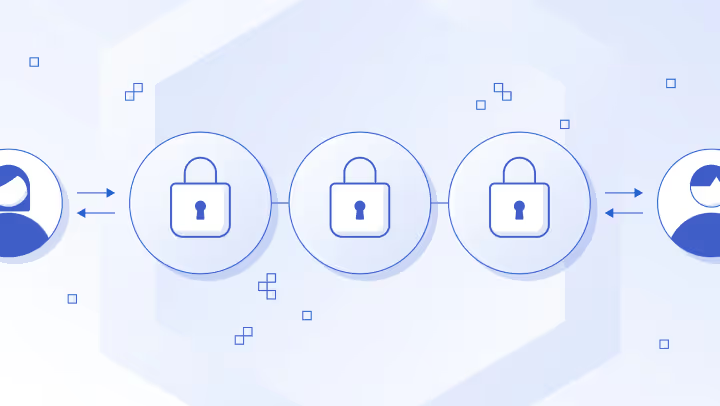What Are Bitcoin Stablecoins?
Bitcoin stablecoins are digital tokens designed to maintain a stable value by being pegged to traditional assets such as fiat currencies.
Unlike Bitcoin, stablecoins are designed to maintain a stable value by pegging to traditional assets like fiat currencies. Their importance within the blockchain ecosystem has rapidly increased as they have reached a total market cap of over $170B. This growth highlights their vital role in providing stability and functionality in a market often characterized by volatility. Unlike Bitcoin, which serves primarily as a digital store of value and is less suited for everyday transactions, stablecoins offer a reliable medium of exchange. They enhance decentralized finance (DeFi) and blockchain applications by improving liquidity, reducing transaction costs, and increasing accessibility. Through mechanisms such as fiat collateralization, crypto-collateralization, and algorithmic adjustments, stablecoins effectively address the limitations of traditional cryptocurrencies, fostering broader adoption and operational efficiency in digital financial systems.
Issued on various scalability solutions in the Bitcoin ecosystem, Bitcoin stablecoins leverage the foundational security of the Bitcoin network while enabling transactions in stablecoin assets. They offer a practical solution for those wanting to engage with digital assets using the convenience of a stablecoin. By providing a seamless medium of exchange, Bitcoin stablecoins help enhance the usability and functionality of the Bitcoin ecosystem, facilitating broader participation in DeFi and blockchain applications.
Bitcoin vs. Stablecoins
Bitcoin and stablecoins serve distinct roles within the blockchain industry. Bitcoin, often seen as digital gold or a store of value, isn’t necessarily suitable for everyday payments.
In contrast, stablecoins are designed to maintain a consistent value relative to a fiat currency, such as the US dollar. They provide a stable medium of exchange within DeFi and the broader blockchain ecosystem. Stablecoins achieve this stability through mechanisms like fiat collateralization—where reserves of fiat currency back the tokens—or through algorithmic adjustments of supply and demand. Stablecoins issued by entities that manage reserves can be subject to regulatory oversight, which includes requirements for reserve management, auditing, and transparency, ensuring they maintain their value and comply with financial regulations.
How Do Bitcoin Stablecoins Work?
Stablecoins on the Bitcoin network address significant limitations of Bitcoin’s base layer by providing enhanced stability and functionality for decentralized applications. These stablecoins are built on advanced layers which extend Bitcoin’s capabilities and facilitate sophisticated financial operations. For instance, fiat-collateralized stablecoins like USDA are backed by offchain reserves, while crypto-collateralized stablecoins such as rDAI utilize other cryptocurrencies as collateral to preserve their peg.
Stablecoins offer numerous advantages, including improved liquidity, lower transaction costs, and greater accessibility. This allows for seamless interaction with various applications, making stablecoins a key component in the Bitcoin ecosystem.
Looking ahead, the implementation of Taproot Assets is set to revolutionize Bitcoin stablecoins functionality by enabling their native issuance and exchange directly on Bitcoin’s base layer. This development promises to increase operational efficiency, further expanding the adoption of Bitcoin stablecoins within decentralized finance and expanding their utility across a broader range of applications.
Popular Bitcoin Stablecoins
- BRZ—BRZ is a stablecoin pegged to the Brazilian Real (BRL), designed for seamless integration into blockchain systems for Brazilian users. Its efficient infrastructure enables swift, low-cost transactions, facilitating access to global crypto markets without currency volatility.
- DoC—A stablecoin fully collateralized by Bitcoin, DoC maintains a 1:1 peg to the US Dollar. It provides a stable solution for everyday transactions and can be accessed through exchanges or minting through smart contracts.
- rDAI—Offers a cost-effective alternative to Ethereum’s DAI with lower transaction fees. It allows users to bridge their DAI to rDAI, benefiting from reduced costs while preserving a 1:1 peg to the US Dollar.
- USDA—A decentralized stablecoin pegged to the US Dollar. Users can mint USDA or exchange other assets for USDA.
Enhancing Bitcoin Stablecoins With Chainlink
To enhance Bitcoin stablecoins’ functionality and increase their robustness, the integration of Chainlink’s suite of services—such as Price Feeds, CCIP, and Proof of Reserve—offers significant advantages. Chainlink Price Feeds provide real-time, tamper-proof price data that is essential for increasing a stablecoin’s adoption across the DeFi ecosystem. Chainlink CCIP facilitates seamless cross-chain transactions, allowing Bitcoin stablecoins to interact across blockchain networks, thereby enhancing liquidity and accessibility. Chainlink Proof of Reserve cryptographically verifies the status of reserves, helping to ensure that stablecoins are fully backed by their collateral when integrated into the minting function of the stablecoin. Through these services, Bitcoin stablecoins gain enhanced utility, security, and interoperability, enabling broader adoption and improving their capabilities within the DeFi ecosystem.











